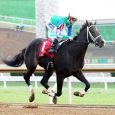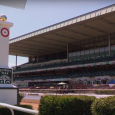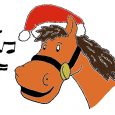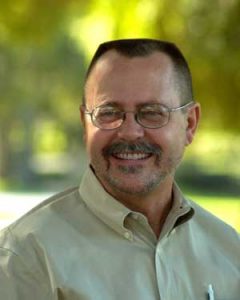
Brett Fernung (photo via journeymanstallions.com).
An older sibling, an interest in livestock and exposure to the sport at a young age, were among the variables that were critical components in helping to direct the career path Journeyman Stud’s Brent Fernung would eventually follow.
The Florida Thoroughbred Breeders’ and Owners’ Association (FTBOA) president has spent the preponderance of his life in the Thoroughbred industry, something that was fostered during his youth. Fernung’s older brother John — 12 years his senior — had graduated from high school, and went to work for a horseman named M. K. Essig, who had a farm in Noblesviille, Indiana.
Brent was 7-years-old at the time.
Learning the Ropes
His older sibling had the opportunity to travel around the midwest, with Beulah Park, River Downs and Ellis Park being destinations on the itinerary. It was that early exposure to the racetrack, something Brent was drawn to, that would develop from those nascent stages into a life-long career.
“They talk about black sheep of the family — there were two of us in our family, because I also have a brother and sister who are both school teachers, and my mother and father were both school teachers,” said Fernung. “Those acorns fell a little bit further away from the tree.”
Brother’s High School Friend
Fernung’s family had sheep, cattle horses and goats, so being around animals was second nature, and by the time he was ten, he found himself spending weekends at the racetrack with his older brother. It was at that time John Fernung would reconnect with a friend from high school, one that had done extremely well as an entrepreneur, who would go onto become the leading Thoroughbred owner in money won for five consecutive years. John Fernung’s friend was none other than the co-founder of the Ponderosa Steakhouse chain, Dan Lasater.
“He made a lot of money and decided he wanted to get into the horse business, at the time, I don’t think we realized how big he wanted to get into the horse business,” said Fernung. “Pretty soon, he had the leading racing stable in the country. My brother was managing it. That’s when I was in high school. At that point, I pretty much knew what I wanted to do.”
Understanding His Passion
Fernung would enlist at Purdue University, majoring in pre-veterinary medicine, but, after two years, his passion for the Thoroughbred industry was so strong, he would make the transition into what would become his lifestyle — a love affair that exists to this day.
The horseman has been married to his wife Crystal for more than 43 years and they would spend a year in Indiana, where Brent would work for the state highway department, driving a snow plough to make roads accessible.
The Fernungs would relocate to Marion County in June of 1976, with Brent’s older brother managing Lasater Farm on County Road 475, an operation that was 1,000 acres in size, boasted several hundred horses and would eventually become another successful breeding and racing operation, Franks Farms.
Opportunity Knocks
However, Brent Fernung’s entry into the Marion County market wasn’t as seamless as one would think; his brother didn’t offer him a job.
“The trainer down there said, ‘we have opening, do you want to go back to work with horses?’ I was back down here making $135 a week and having an old house furnished to us, and that’s how we ended up down here.”
Stallions and Stories
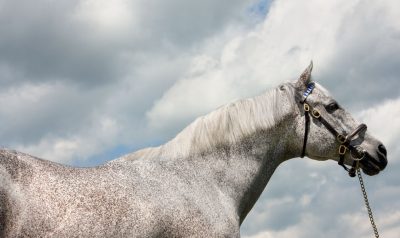
Great Above was the sire of Holy Bull, pictured, who was named Horse of the Year in 1994 (photo via Darley America).
Among the Florida foundation sires at Lasater Farm were Great Above and Cutlass. Silver Buck was also a part of the stallion roster, but the two most prominent stallions were Noholme II and Nodouble, North America’s leading sire in 1981.
“The stallion industry is largely a function of timing,” said Fernung. “If Great Above would’ve had Holy Bull in his first crop, instead of one of his last crops, he probably would’ve been standing for a $50,000 stud fee. He kept getting good race horses right along. But he didn’t get that big shot, that big-name horse until it was too late for it to really make a difference. Timing is so important with everything that you do with these animals.”
Great Above did enjoy success as a sire, but not everyone was warm to the idea of supporting his book as a stallion, said Fernung.
“I was in Miami at the 2-year-old sales with Lasater and my brother. It was 1983,” said Fernung. “We were flying home on Lasater’s Learjet that night back to Ocala, and John Nerud got a ride back to Ocala with us. Tartan had had Great Above. They ran him first time out for $25,000 and Pancho Martin claimed him for Sigmund Sommer. Then he did all the good with him. He was the leading first crop sire in North America.
“Lasater said to Nerud, ‘John, why don’t you breed a mare to Great Above, I notice you’re not breeding anything over here.’
“Nerud said, ‘Let me tell you something, the only thing I wish I could’ve done different with Great Above is castrate him.’ He was a tough old bird.”
Moving Up the Ladder
It was from that propitious opportunity that another would present itself — one that Fernung, who by this time had moved up to being the broodmare manager at Lasater Farm, would successfully transition into managing Franks Farms, when the petroleum baron would buy the operation from Lasater.
“Franks took over for Lasater as the leading racing stable, but did it quite differently,” said Fernung. “Mr. Franks was a volume guy. We’d have 300 head of weanlings come into us from Louisiana every year, we’d be sorting through and break about two-thirds of them for him.”
There were distinct differences in the approach between the two operations, although both enjoyed a great deal of success, said Fernung.
“With Lasater, it was probably higher-quality horses,” said Fernung. “I remember foaling mares that were in foal to Alydar, Hoist the Flag and Northern Dancer, all the biggest names there were. With Mr. Franks it was more home stallions and a lot of Louisiana horses.”
Syndication Success
However, there was one stallion owned by Mr. Franks that would play a significant role in Fernung’s life, a son of Exclusive Native, out of the Never Bend broodmare, Reminiscing. A winner of the El Conejo Handicap, the stallion was a full-brother to multiple stakes winner Commemorate.
“I did syndicate one horse for him while I was there, Premiership, who went on to be the leading first-crop sire in North America in his first year,” said Fernung. “That was the last year I worked for Mr. Franks, and then I went out on my own in 1989.”
Facing Life’s Challenges
Life’s vagaries are often dictated by changes beyond our control, and the ability to be flexible and adapt to the transformations that are endemic to an ever-evolving industry is something that’s part of the horseman’s inherent character.
Fernung’s steadfast commitment and stable demeanor has enabled him to succeed, where many haven’t had the wherewithal to go forward.
“I went through a period where I was actually allowed to keep a couple of horses on the farm, and I was claiming a broodmare here and there,” said Fernung. “I would claim a mare for $5,000 and get $20,000 out of her. The feed bill was minimal, if nothing at all. I was making money and I thought this was the easiest game in the world. I must have bought, 10, 12, 15 horses and never lost a penny on them, and then the tax change came [Tax Reform Act of 1986] and I found out I wasn’t that smart. It was that things were rolling good and, then all of a sudden, it was a lot more difficult to make money.”
The timing wasn’t the best when Fernung made the decision to go out on his own, but through the pitfalls and adversity, he would persevere. The market’s volatility and lack of stability, having just crashed, left a feeling of uncertainty that was noticeable around every corner with a deep volume of horse farms for sale.
At the time, Fernung was confident that he would land on his feet, securing another farm manager’s job, after leaving the one at Franks, but there weren’t any positions available.
“I started selling horses. People would ask, ‘Do you have a share for sale?’ And I would say, “I could get it sold for you,’” said Fernung. “I was doing a little hustling like that. Then I struggled for a couple of years.”
However, Fernung’s fortunes would change — the propitious success of Premiership was a turning point for the horseman.
“Premiership hit hot, and I had several shares in him, and that helped carry me through,” said Fernung.
On the Threshold of Kentucky Derby Success
A patient man, Fernung knew things would eventually improve and another fortuitous event would, once again, transform his life. This time, a mare became available for sale in 1992 — Eileen’s Moment.
“I had her 2-year-old the previous year, and I really liked the horse. I had him for a short period of time and his name was Lil E. Tee,” said Fernung. ‘So, I bought his dam in March of his 3-year-old year, and he won the Kentucky Derby two months later. That added a big charge to it. That made us.”
The 1992 Kentucky Derby took on added meaning for Fernung, knowing the connections of the horse as well as he did. The son of At the Threshold still resonates strongly with the horseman, even after more than a quarter of a century.
“I knew Lynn [Whiting, Lil E. Tee’s trainer] pretty good and, before I knew Lynn, I knew Mr. Partee, who owned [Lil E. Tee],” said Fernung.
The two had met years earlier, in 1974, while Fernung was working at Dan Lasater’s farm outside Louisville, a place where Cal Partee was boarding horses. One day Partee made an appearance at the farm with his trainer, Harold “Baldy” Tinker. The farm manager, Neil Huffman, informed Fernung that he wasn’t going to be on the property, but told the teenager he could take the men around the farm and show them their horses.
“He [Huffman] said, ‘Don’t screw this up, he’s the richest man in Arkansas.’ And then he laughed,’’ said Fernung. “Mr. Partee came in and I started showing them their horses. I’m bringing them out and telling them about each horse, but I’m not saying much more than this is your so-and-so colt. They’re warming up to me; he’s a very nice man, very personable. We got over to the yearling barn and I pulled out a yearling. I said, ‘This is your Tulyar colt, who was a stallion who was standing at Claiborne at the time, he’s sure done a lot better since we gelded him.’”
The response from Partee caught Fernung off guard, making the young horseman a bit uncomfortable.
“[Partee] says to Baldy, ‘Did you tell these people they could geld my colt?’ He goes, ‘No Cal, I didn’t tell them.’ I’m sinking to the ground,” said Fernung. “Partee looks at me and says, ‘I’m just joshing.’ They laughed.”
Nearly a decade goes by and, as fate would have it, Partee’s and Fernung’s paths would cross again, this time in Marion County. Partee shipped a number of yearlings to Lasater’s farm in Ocala, the operation where Fernung had the dual role of being both the broodmare and yearling manager.
“My brother brought him to the farm, he was managing the farm, and he got out of the car with Partee and Lynn Whiting,” said Fernung. “My brother said, ‘Mr. Partee, I don’t think you’ve ever met my brother.’ Partee said, ‘Oh yeah, we’re old friends.’ He said, ‘Son, you haven’t gelded any of these horses, have you?’ We became friendly because that’s the kind of guy he was. That’s when I met Lynn. That was the day.”
Fernung and Whiting became friends over time — and their bond grew when Lil E. Tee was on the Derby trail and running in the preps leading to an eventual start in the Run for the Roses. It was a thrill for Fernung.
“I remember calling Lynn because he’d put a shadow roll on the horse before the Arkansas Derby, and he ran second to Pine Bluff. I called him and said, ‘That horse ran good,’ and he said, ‘Yeah.’ I said, ‘I saw you put a shadow roll on him.’ He said, ‘Do you think it helped him any?’ And I said, ‘no.’ Because he always held his head pretty high.
“I said, ‘You couldn’t tell any difference.’ He said, ‘You’re right, I might just drop it down and use it as a nose band.’ He said, ‘You’re going to get lucky because of that mare.’ I hung up the phone. It was April, and I told Crystal, ‘Lynn thinks he’s going to win the Derby with that horse.’ It was quite a shock and much needed for us at that time.”
The Fernungs were based at their farm on Ocala, having just moved onto the property, leasing it at the time, and the stallion operation that’s at the location now, didn’t exist at that time. One of the handicappers making the derby odds for the winter book, held Lil E. Tee at odds of 99-1 after he had won the Jim Beam Stakes and told Fernung he wouldn’t bet the horse with his money.
“One of my nephews was working for me, and he said, ‘Give me a couple of days off, and give me a thousand dollars, and I’ll go out there and bet $1,000 on the horse.’ I said, ‘I wouldn’t mind putting $1,000 up, but I can’t do without you.’ We didn’t bet him at those big odds, and I think he paid $32.”
Lil E. Tee’s Kentucky Derby victory still resonates deeply with the Fernungs and the fact it was Cal Partee’s horse made the experience markedly better.
“I actually helped him buy the horse too,” said Fernung. “I alerted him to the horse being available. I made a little commission, not much; he gave me a little something for helping him to buy the horse.”
Building on Success
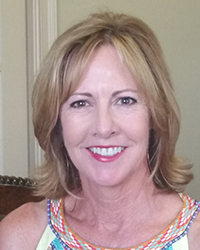
Crystal Fernung (photo via journeymanstallions.com).
The Fernungs spent the rest of the decade of the 90s at their farm in Ocala, what he described as a mom-and-pop operation, where they kept eight or 10 of their own mares. But another propitious event would occur. Fernung was notified that another operation in the area was considering making some changes.
“John Sykes, who owned Cloverleaf was thinking about replacing his farm manager,” said Fernung. “I interviewed for the job. I really enjoyed running big farms and, to me, it was a lot easier than a little one. I met with him, agreed to take the job, and once I took the job, 30 days after, he sent me to Kentucky, and I bought a million dollars’ worth of broodmares.”
The good fortune would continue the following year, and Fernung used his expertise and experience to buy another million dollars’ worth of broodmares, among those was a multiple-stakes-winning mare by the 1986 Breeders’ Cup Sprint champion, Smile.
“In that second group was a mare called I’ll get Along,” said Fernung. “She had a weanling that year by Elusive Quality who grew up to be Smarty Jones. We sold her the year that Smarty Jones won the Derby and the Preakness. We sold her for $5 million. That’s when I first got a clue that the mare’s 2-year-old was pretty good because George [Isaacs] calls me from over there [Bridlewood], ‘Hey, would you guys be interested in selling that mare your bought?’
“I said, ‘Nah, I don’t think so George, but I appreciate the call because that told me that horse must be ok.’ It was a lot of fun, because I really enjoyed the second time around better than I did the first, because I didn’t own the first. You’re experiencing it, but you’re not really absorbing it, like when Lil E. Tee won the Derby.”
Stopping to Smell the Roses
When Smarty Jones won the Kentucky Derby, Fernung took a moment to smell the roses, stopping to reflect and take in the meaning of the victory.
“It was good and a lot of fun, and then selling the mare was a lot of fun too,” said Fernung. “Fasig-Tipton’s Body Browning had called me, wanted to sell the mare, and I was like ‘There’s no way I’m going to sell her.’ The only way I could mess this up is if I sell her at Fasig-Tipton and she brings a penny less than what she would have at Keeneland.”
Browning was able to convince Fernung to consign I’ll Get Along to the Fasig-Tipton sale, and their unique approach of offering a program, where the sales company bought an hour-long block on TVG, where they sold the advertising geared toward the night sales, with the show’s content concentrating on the sale of Smarty Jones’ dam, said Fernung.
“It was all built around it, we got a lot of publicity out of it,” said Fernung. “That was the only thing. They put quite a program together. It was well thought out.”
A Stallion of a Lifetime
One of the many areas Fernung has excelled at in the Thoroughbred industry is in the stallion market. His experience and knowledge coupled with his practical and no-nonsense approach have made him one of the most respected horsemen in the industry.
“The very first time I met with John Sykes, I told him, ‘Look, if you’re going to have this big horse farm down here, and you want to be successful, you can do whatever you want to do, but you need to have stallions and you need to make your imprint on the business with stallions’,” said Fernung. “The first horse I brought to town, I purchased Repent, and he did ok. And then I had some horses show up, they wanted to stand with us. Gary West sent over Mass Media.
“But then, the second horse, I hustled real hard to get was Wildcat Heir. They sent Wildcat Heir and, the following year, I went out and bought Congrats. I left after that year. He (Sykes) decided he was going to close the farm down, buy a farm in Kentucky and go that route. I left and took Wildcat Heir with me, and brought Mongoose and Mass Media and some other horses and took them to the Oaks for a year, what was the Oaks of Oxford, until the stallion facility was built here [Ocala].”
In 2010, Congrats would go onto be the leading first-crop sire in North America. Congrats’ success would be followed by Wildcat Heir being the leading second-crop sire in North America, firmly cementing Fernung’s name in the stallion end of the industry.
However, Wildcat Heir died in 2014, leaving a significant hole in Journeyman’s program. But there are two stallions on the roster whose first foals are 2-year-olds of 2019 — Khozan, who is a son of Distorted Humor, and a half-brother to three-time Eclipse Award winner Royal Delta, and Fury Kapcori, a son of the 2000 Horse of the Year Tiznow.
“Wildcat Heir was probably my favorite horse that I’ve been around,” said Fernung. “He was the kindest horse I’ve been around. He was fun. He was the horse we were most emotional about. When he died, it was like losing a member of the family.”
The New Breed
When Wildcat Heir passed, Fernung bought Khozan, who the horseman believes has as much potential as any horse he’s been around. Fury Kapcori offers a fresh outcross to every bloodline, being by Tiznow out of a Go for Gin mare.
One mare Fernung bought for Sykes was carrying a multiple graded stakes winner, whose added money scores included the Forward Gal (G2) and the Davona Dale (G2).
“I bought Apasionata Sonata for john Sykes, the year that we sold I’ll Get Along, and the foal she was carrying was a good mare named Bsharpsonata,” said Fernung. “Her next foal was Back Talk, who stands at stud here and sired a Florida stakes winner from his first crop. You start seeing the combinations for things that you do that still resonate.
“He [Sykes] had Crown of Thorns down here [Cloverleaf Farm II]. I bought his sire and dam as well. I mated the mare, broke Crown of Thorns and sold him at a 2-year-old sale, and eventually he came back to stand down here.”
Realizing a Dream
Fernung never envisioned having success in the stallion business, although he did daydream about it from time to time.
“It’s been a really lucky, fortunate thing for us,” said Fernung. “We never really anticipated it, but it actually happened. It’s incremental. I like to tell people if Lasater had not got out of the business, I’d probably still be his broodmare manager, because I loved that job as much as anything I’ve ever done. If he could’ve been bringing in more Raise a Natives and Hoist the Flags, and those kind of horses, I would’ve been perfectly happy taking care of them and making $300 a week.”
Shaping the Future
In addition to managing Journeyman Stud, Fernung serves as the president of the FTBOA, a position he’s held on more than one occasion. Fernung has had the opportunity to work with a number of past presidents, all who have certain talents and abilities and who bring a host of invaluable resources to the table.
“They all have their strengths that make them shine, from Phil Matthews to George Russell, and those guys are all critical thinkers and sharp fellows,” said Fernung. “If I bring anything to it in excess or different from what anyone else does, it’s probably that aspect. I’m an old-school horseman, started out as a groom, it wasn’t because that’s what my daddy wanted me to do before he gave me the farm, it was because there was no other choice.
“I went from groom to foreman, to broodmare manager. I learned how to train horses, so I could sell them.
“Some people in the Florida breeding industry will set somebody aside and say, ‘Well, he doesn’t know what it’s like to be me.’ They have a hell of a time saying that about me, because I’ve experienced all of the ups and downs that go along with this. I may have a little bit of a perspective of the guy that’s struggling. I can say that’s my strength.”
It’s those challenges associated with the Thoroughbred industry and the sport of Thoroughbred racing that have allowed Fernung to evolve as a horseman. And serving as the president and as a board member of the FTBOA, has allowed him to share those experiences and shape policy while going forward.
“At times, you really don’t think about it very often, occasionally something will hit me, it’s certainly an honor to be the president of the FTBOA. You’re standing in a spot that people like George Steinbrenner, who held the same position, [stood in].
“So, consequently, you try to do right by the association. When you put it all in perspective, just making a living in this business for 40 years is something to be proud of.”

